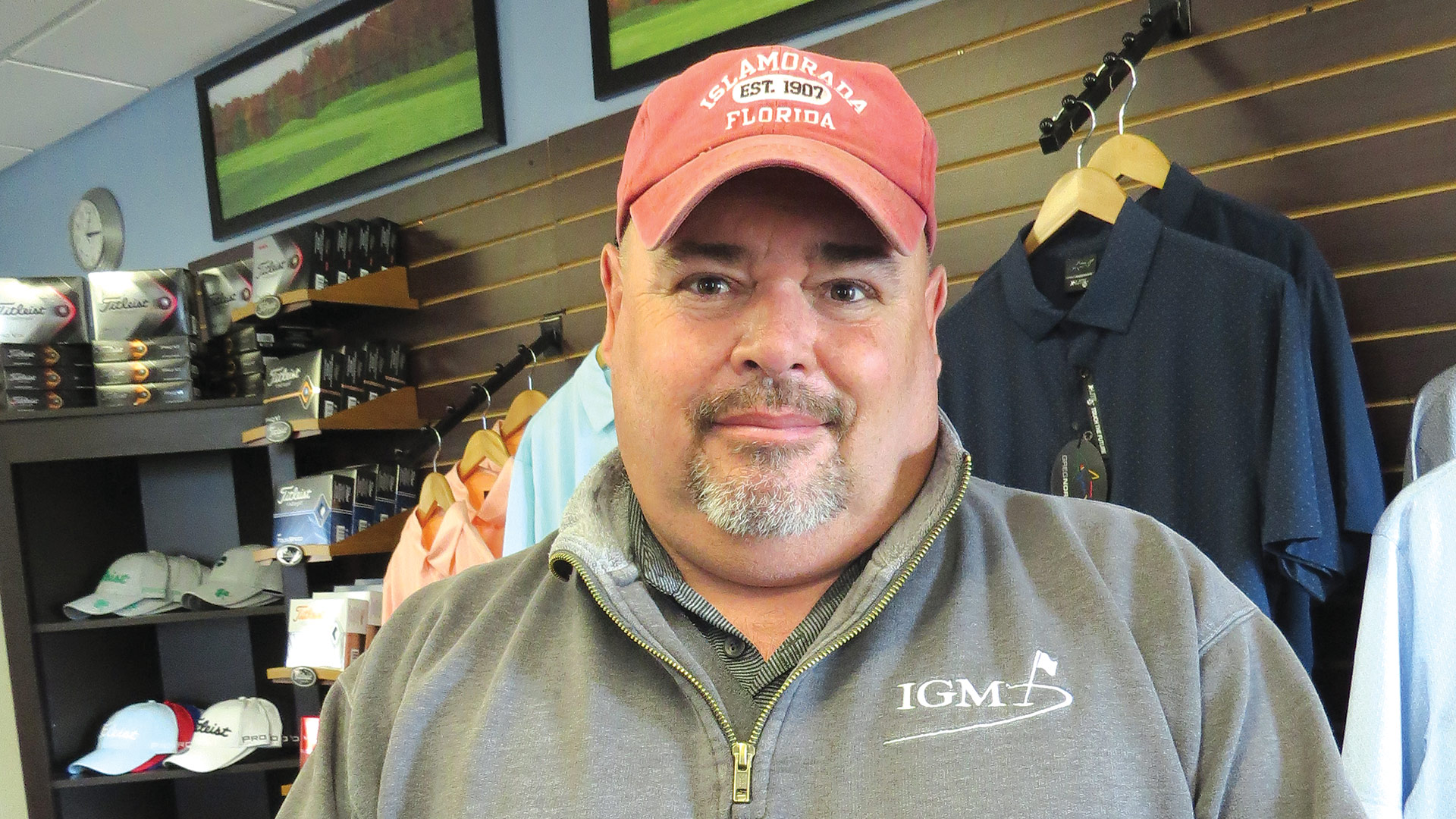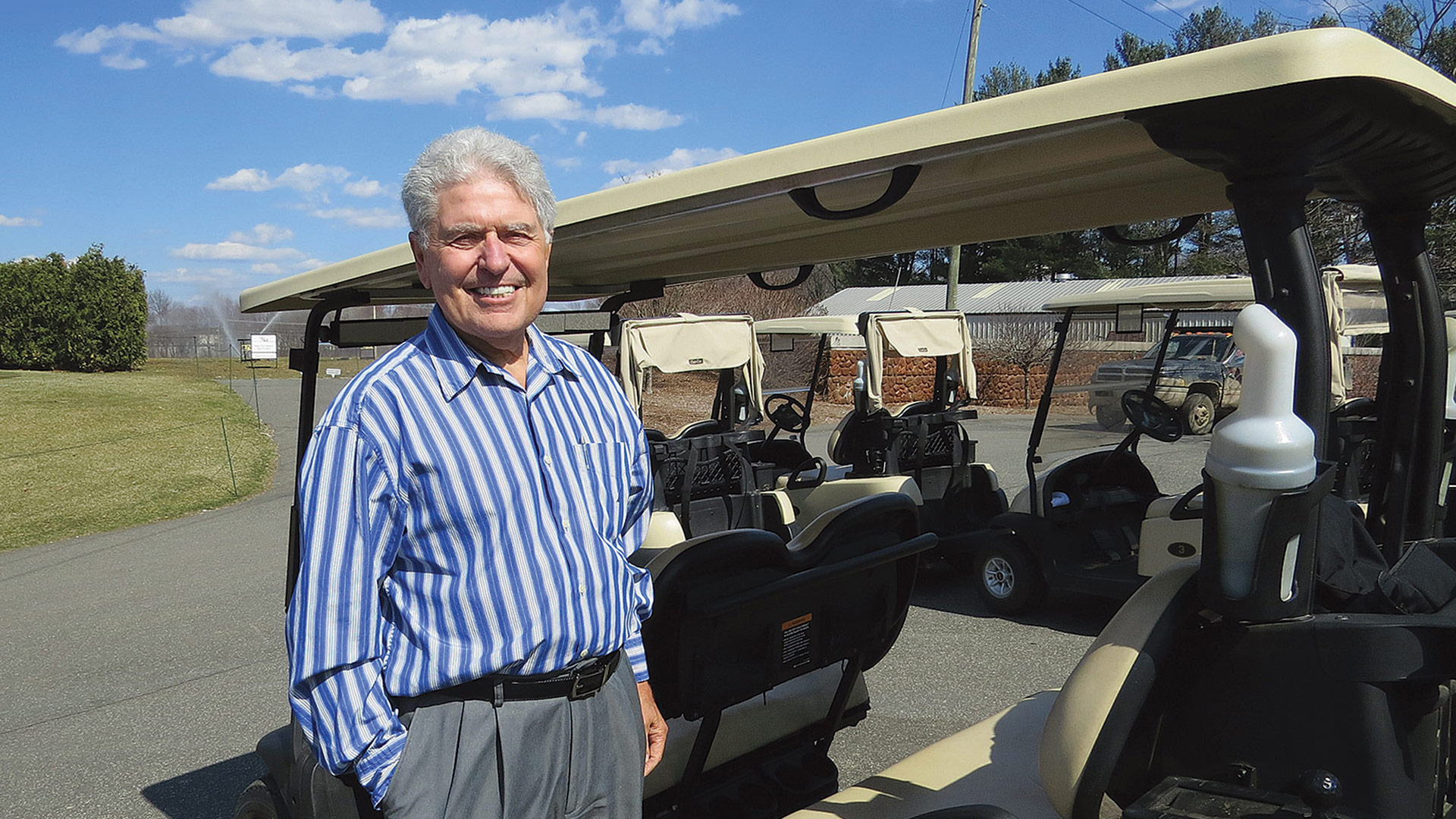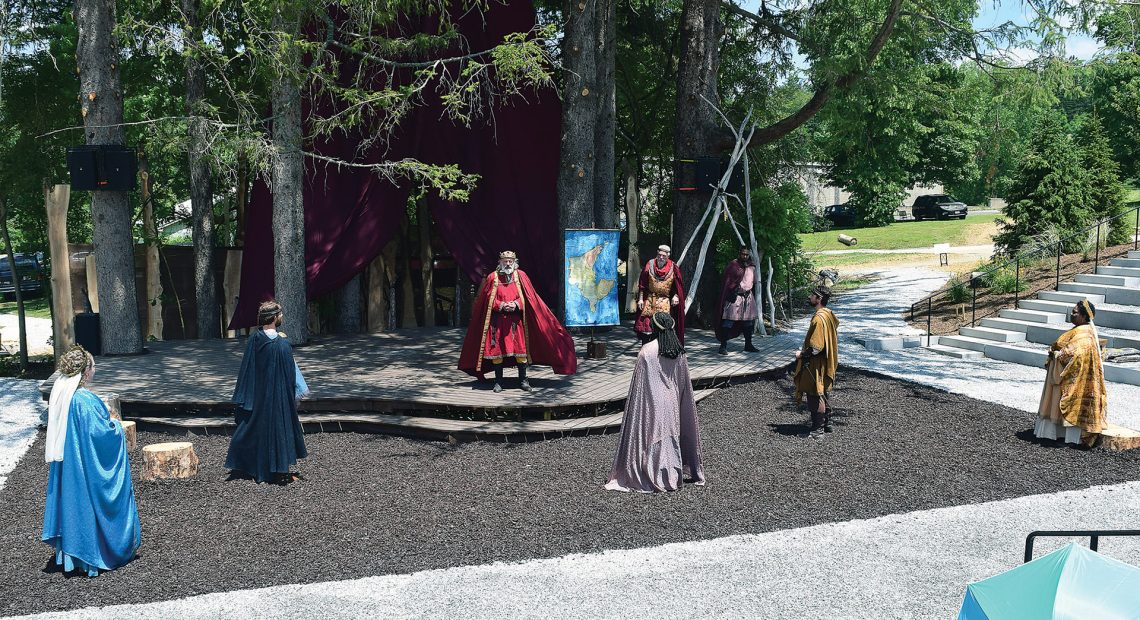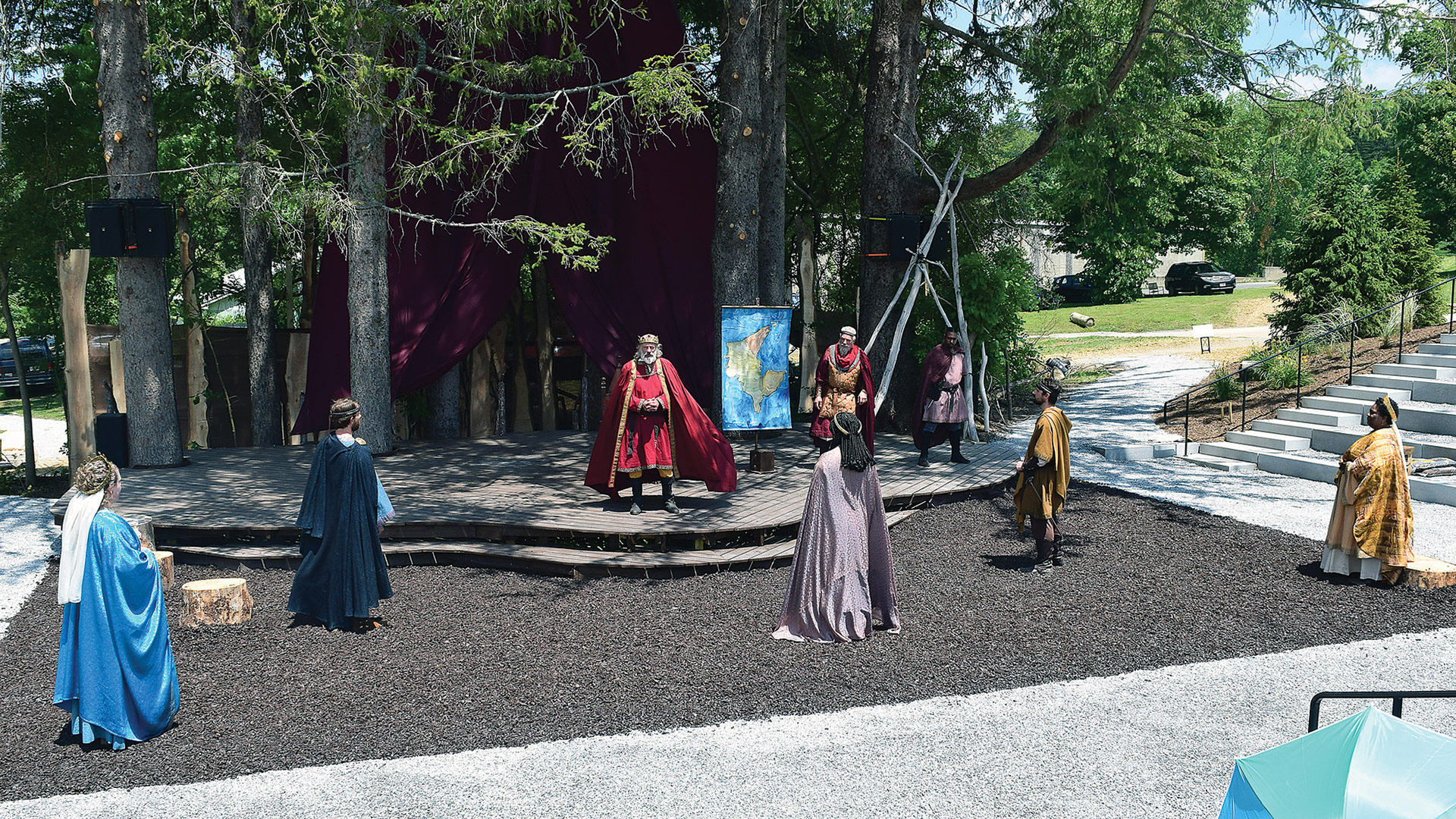Still on a Roll

Dan Burak, owner of Tekoa Country Club.
The game of golf — and the business of golf — has enjoyed a resurgence since the start of the pandemic, with many people picking up the game or returning to it after pausing for one of many reasons. As the new season begins, there is optimism that the momentum gained will carry over into 2022, with an understanding that there are many challenges — from workforce issues and rising prices for just about everything to the very real possibility of a golf-ball shortage — that will have to be overcome.
As the 2022 golf season commences — earlier than what would be considered normal at many facilities — those operating courses are, to borrow language from the game, looking at both scoring opportunities and some potentially heavy rough.
Indeed, as courses across the region start to welcome players to their first tees — some have actually been open for weeks now — they are looking optimistically toward building off some pandemic-generated momentum for a sport (and a business) that was in the tall grass and struggling on many levels just a few years ago.
When the pandemic closed many indoor (and some outdoor) options when it came to sports and recreation, golf became an attractive alternative in the late spring and summer of 2020, and many of those who took up the game or returned to it after pausing for one of many reasons stayed with it in 2021, said Dan Burak, manager of a number of area commercial properties, who added Tekoa Country Club in Westfield to his portfolio in 2009.
“The golf side of the business has been phenomenal the past few years,” he told BusinessWest, adding quickly that the banquet side of the ledger has not recovered as quickly, but there are many positive signs there for 2022, which we’ll get to later. “We were almost too busy on the golf side. We had to say no to a lot of people and tell them that there were just no tee times available. We hated to say no, but it was a good problem to have.”

Jesse Menachem says some courses posted record years in 2021 as golf witnessed a resurgence, and he and others expect that momentum to carry into 2022.
Jesse Menachem, executive director and CEO of the Massachusetts Golf Assoc., said courses across the state have seen significant increases in play over the past two years, with many of them recording record years in 2021, despite frequent rain that closed facilities for several days during the season.
“Last year saw a continuation of the demand, the increased level of interest and activity, from the latter part of 2020, the second half of that year,” he said. “It was really encouraging in terms of tee sheets being very full, merchandise sales being through the roof, and, in some cases, hitting some record numbers — membership levels being high, wait lists at many private clubs that had not experienced that in the past years … across the board, those trends are really solid.”
Looking ahead, course owners, managers, and pros alike are expecting those patterns to continue into 2022. But despite this generally upbeat outlook, there are many formidable challenges to overcome. These include everything from workforce issues — golf operations are in the same boat as almost all businesses in the broad recreation and hospitality category — to simply stocking golf balls in the pro shop; from sharp increases in the price of everything, from gas to food to fertilizer, to deciding how much of these increases can be passed on to the consumer.
The workforce crisis is being handled the same way it is in other sectors — by increasing wages when necessary and casting a wide net when it comes to recruitment, said Mike Fontaine, general manager of the Ledges Golf Club in South Hadley, a muncipally owned, semi-private facility.
“We’re trying to staff up, like everyone else, and the price of staffing is at a level that we’ve never seen before,” he said. “And we have to be creative with how we go about handling that; we’re getting more applicants, which is positive, but it’s still a challenge.”
As for supply matters, they were certainly an issue in 2021, and there are no signs of improvement on the horizon, as we’ll see, with course operators struggling to secure everything from mowers to golf gloves.
Meanwhile, and for all those reasons listed above, those who have taken up the game, returned to it, or kept with it all along will find playing a round to be expensive in 2022. The only question is how much more expensive.
“It’s inevitable,” said Menachem, citing the rising cost of practically everything needed to operate a course, from labor to weed killer. He added quickly, though, that while courses must account for the rising prices they’re facing, they have to be careful not to price out those who are discovering golf — or rediscovering it, as the case may be.
For this issue and its focus on sports and leisure, BusinessWest looks at what promises to be another solid year for the industry, but also the many challenges lurking down the fairway.
‘Hole’sale Improvement
Flashing back to the spring of 2020, Burak said it was a curious, challenging time for course owners and managers.
First, courses were allowed to open, and then they were ordered to close, even as many other states allowed them to operate. Then, when they were allowed to reopen, they couldn’t operate their restaurants or even allow customers to use the restrooms in the pro shop.
Courses adapted to the new landscape, and so did players, said Burak, noting that, with the 19th hole closed and players unable to buy alcohol at the course, many adopted a BYOB strategy.
And upon learning that this is a much cheaper option than buying at the course, many kept with that strategy even after the restrictions were limited.

Mike Fontaine says that, while the golf business has been solid, there are stern challenges to be met, including workforce issues.
“When we opened the clubhouse … they were already in the habit of stopping at the package store and getting their beer there,” he said. “Some are a little more flagrant about it, with a cooler that’s visible, but some get very creative. It’s a problem.”
Overall, trying to police those players who ignore the large signs informing them that coolers are prohibited is just one of many challenges facing course owners and operators as the new season begins, and probably one of the minor ones.
The list of bigger concerns starts with workforce matters. Indeed, while Burak said he has had relatively good luck on that front, securing an adequate supply of workers for the course, the kitchen, and the ballroom in 2021, Menachem noted that most course operators were not as fortunate. And the forecast for 2022 is for more of the same.
“It’s a challenge, not only in our industry, but in many others in service, to support operations and fill out your staff for what’s needed to support a consistent and solid operation,” he told BusinessWest, adding that the challenges are not just with jobs at the lower end of the wage scale.
“We’re learning and hearing that clubs are struggling to fill assistant superintendent or assistant professional jobs,” he went on. “There’s many reasons for that, and I think the pandemic exposed it and in some ways expedited it. The days of the golf professional working seven days a week and being obligated and tied to the facility … that’s starting to change. Lifestyle, family activities, balance, quality of life, all that is really top of mind, and it’s something our industry has to be cognizant of.”
Beyond these changes, courses have to contend with a shortage of workers and immense competition for candidates who have no shortage of options.
“You might drive down the road and see a couple of restaurants or stores posting jobs for $18, $20, or even $25 an hour, and that’s competition to our facilities,” said Menachem. “The minimum wage, or the $15-an-hour rate to maintain a golf course and help serve on the maintenance crew, is probably a thing of the past.”

Attilo Cardaropoli says course owners and managers face a number of challenges, including long waits for new equipment and parts for everything from golf carts to refrigerators.
Fontaine concurred, speaking for nearly all course owners and managers when he said recruiting and retaining good help was a formidable, and expensive, challenge in 2021. But as he surveys the scene, he is seeing a somewhat improved hiring landscape for 2022, with the big issue being the price that will have to be paid for that help.
Attilio Cardaropoli, owner of Twin Hills Country Club in Longmeadow, a private club, agreed.
“Last year was a nightmare — we couldn’t find anybody to work,” he told BusinessWest. “Things are somewhat better this year, and we’re hoping it gets better still as the summer comes along with returning college students that we use quite a bit. Overall, it’s starting to ease up a bit, but it’s still not where it should be.”
Par for the Course
Meanwhile, other challenges facing area courses include the rising cost of needed goods — again, that means everything from food to golf balls to landscaping equipment — and the short supplies of all the above. And, of course, these two issues go hand in hand. As supplies shrink (often as demand increases), prices go higher.
Burak put all this perspective by relaying his difficulties in securing a much-needed tractor.
“I want the same brand that I had before, because I have all the attachments for it,” he explained. “I went to the dealer, saw the model I wanted, and I said, ‘what’s the availability?’ He said, ‘I have none in stock, and I have seven on the waiting list that are already sold. The first one that comes in goes to the guy who’s been on the list the longest, and he put his order in last August.’ I probably won’t get the tractor in all season, the list is so long, and that’s just one dealer.”
Cardaropoli told a similar story with his efforts to secure a new fleet of golf carts.
“We were supposed to get them right now, but the dealer says they’re just not available yet,” he said. “We’re hoping that they’re just a few months late, but we just don’t know. We ordered them last year, and we’re still waiting. And for some of the older ones that we’re still using … they break down, and we can’t get parts for them. It’s a struggle.”
Fontaine concurred. “With fertilizer alone, we’re seeing increases from 75% to 135% — and that’s just going to be a huge hit,” he said, noting that some of the materials in those products come from Russia and Ukraine, meaning things are likely to get worse before they get anhy better.
But the problem extends to golf equipment as well, with those we spoke with, noting that it was difficult to keep gloves, bags, and especially balls in stock last year, and similar problems are expected for 2022.
SEE: List of Golf Courses in Western Mass.
“We were very fortunate that we got our big order of golf balls in the spring from Titleist,” said Burak, mentioning the top ball maker in the world as he talked about 2021. “And we ended up with more than we needed, actually, and the rep kept coming back, saying, ‘do you have any we can take back? We have customers begging for them.’”
Dave DiRico, owner of Dave DiRico’s Golf & Racquet, told BusinessWest that such problems are likely to continue into 2022.
“Titleist is saying that by mid-summer, they could be running out of golf balls,” he said, adding that talk within the industry is that the resin needed to manufacture balls comes from China, and it is in increasingly short supply. “That’s what the companies are telling us. With many of these things that come from China, the prices are jumping, or you just can’t get them.”
Golf bags are a good example of this, he said, adding that supplies are limited and prices are skyrocketing, with models that cost $119 last year going now for at least $160.
Going for the Green
Despite these many challenges, golf-course operators are expecting 2022 to be another good year, perhaps a record year.
As noted, many courses are already open, and most anticipate opening sooner than would be considered normal, if recent weather patterns continue. And a good start is always important, Menachem said.
“It’s always a big help because it gets people interested, and you can build momentum,” he explained. “You can also drive some shoulder-season revenue that is not always available.”
Meanwhile, all evidence is pointing toward a continuation of what was seen in 2020 in terms of tee sheets filling up and, at Tekoa at least, having to tell callers that there are no times available.
On the private-course side of the ledger, Cararopoli noted that membership at Twin Hills is at nearly full capacity despite a healthy increase in fees — an indication, he said, that the momentum generated over the past two years is sustainable.
Meanwhile, on the banquet side of the balance sheet — a huge part of the business for many operations — there are many signs of improvement as well. Indeed, after 2020 was almost a complete washout and 2021 saw events but certainly not a full slate, especially later in the year, 2022 looks to be something approaching normal.
“The phone is ringing off the hook on the banquet side,” Burak said. “And that’s been so quiet — it’s been killing us for two years.”
Cardaropoli agreed, noting a slower pace of improvement at Twin Hills, with the phone ringing far more often than it has the past few years, at least with people looking to book events.
“The banquet side is just starting to pick up now,” he said. “Our January and February were terrible, we picked up a few in March, and April looks a little better; it’s really starting to look good for the fall, especially for charity tournaments.”
Returning to the golf side of the business, while the outlook is certainly upbeat, one wild card when it comes to how well these courses do concerns what happens with pricing, said Menachem, noting that, while increases are inevitable, courses need to walk a fine line on this matter.
They no doubt need to raise prices to cover the increases they’re facing, but they should be careful not to raise them to the point where such hikes might discourage those getting into the game or becoming more serious about it.
“There has to be some caution and some balance,” he said. “With the way we’re seeing these trends with new golfers coming in and others coming back to the game, we want to make sure we’re not boxing them out or potentially losing them again. Ten to 15 years ago, we saw some similar trends, when golf was at its peak and we were getting new golfers. Prices were going up, and we lost some of those fringe golfers.”
Those we spoke with said they’ve had no choice but to raise fees given all the price increases they’ve been hit with — on the labor front and every other front, for that matter.
“We have to go up on our membership, and we have to raise our price on greens fees and cart fees just to stay stable and competitive with the market,” Fontaine said. “With COVID and now the war in Ukraine, people have become accustomed to seeing prices going up, but I’m not sure how much higher we can go.”
Burak agreed, noting that Tekoa has increased greens fees $3 across the board, with memberships going up as well. Those hikes, implemented last fall, probably don’t cover all the increases he’s facing, he said, but competition for the golf dollar is steep, and the somewhat modest increase he’s implemented reflects that.
But he was quick to note that further adjustments may be necessary if inflationary trends continue.
“We’re going to have to see what our expenses turn out to be once things really get going,” he said, adding that these sentiments are true on both the golf and banquet sides of the business.
Bottom Line
Summing up the outlook for 2022 and beyond, Menachem said there is plenty of room for optimism within the golf industry, but there are also some bunkers and water hazards, figuratively speaking, that present real challenges to progress — and profitability.
“With all the positivity or demand and interest, there’s definitely, on the flip side, things we need to be focused on,” he said, adding that, in most respects, those within the industry expect to build on the momentum that’s been generated and put up some good numbers.
George O’Brien can be reached at [email protected]








